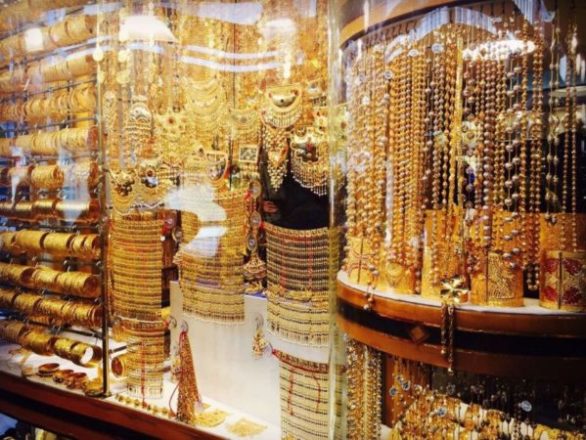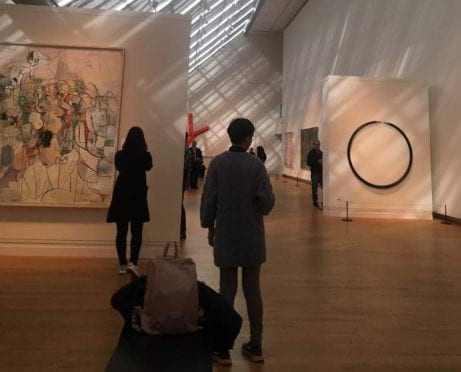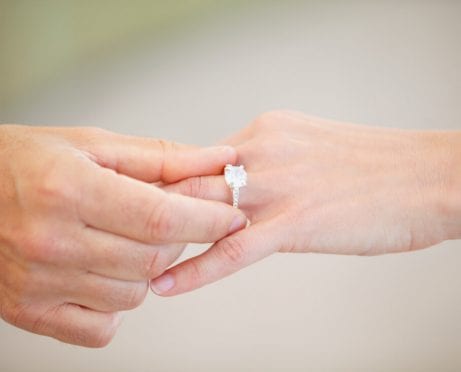
Jocelyn Li
 I'm a goldsmith’s daughter, and I spent a fair amount of time in Los Angeles’ Jewelry District. As a result, I’ve learned enough to know what type of gold is most appropriate for certain occasions. Let’s begin with karats.
I'm a goldsmith’s daughter, and I spent a fair amount of time in Los Angeles’ Jewelry District. As a result, I’ve learned enough to know what type of gold is most appropriate for certain occasions. Let’s begin with karats.
What Is a Karat, Exactly?
A karat (k) essentially means how pure the gold is. Twenty-four karats denotes the purest gold. It's also the number used to figure out an item’s gold content.
The Different Purity Levels
24 karat = 100%, or pure, gold
22 karat = 91.7% gold
18 karat = 75.0% gold
14 karat = 58.3% gold
12 karat = 50.0% gold
10 karat = 41.7% gold
How did I come up with these numbers? I divided the number of karats by 24 because 24k is the standard. For example, for 18-karat gold: 18/24 is 0.75, or 75 percent, gold.
What Karats Mean for Your Jewelry
The higher the gold content a piece of jewelry has, the deeper its color will be. Jewelry with a lower gold content may appear brighter, depending on the type of gold and what it is mixed with.
Prices also vary based on gold content. For example, Macy’s sells a 10k yellow gold 22-inch chain necklace online for $900. The same necklace in 18k gold costs $1,600.
Note that the more gold an item contains, the longer it will take to tarnish. (Gold plating may be an exception to this rule.)
Also, an item with higher karats will be softer and more expensive.
I generally don’t recommend 24k gold to anyone unless the object is for display only or is being worn for one night. (If you have that kind of money to spend, all the power to you.)
Moreover, not many jewelers will sell 24k or 22k gold because of how malleable it is. Twenty-four-karat gold is so soft that I can bend it under my thumbs. Think pirates biting on gold coins.
Different Gold Content for Different Occasions
Eighteen-karat gold is wonderful for jewelry that has sentimental value (anniversaries, career milestones like starting a business, etc.). It’s still relatively soft, but you can wear it for longer periods without worrying about bending it out of shape. You can wear 18k jewelry day to day. However, it will require maintenance and occasional repairs.
Fourteen-karat gold is what I like to call “childproof” gold. This has the most metals mixed into it. It's the most commonly bought because it doesn't tarnish very fast and is durable.
I recommend this for engagement and wedding bands and children’s jewelry because it can survive a lot of drops, rubbing, and exposure to the elements. (You’re not going to take it off every time you get into the shower!)
Ten-karat gold is often used in men’s jewelry. It is stronger than 14k, but also a little more difficult to find. I recommend 14k over 10k for children’s jewelry because 10k tarnishes faster, as it contains the most alloys.
Anything lower than 10k is not considered gold by American standards and is nicknamed discounted gold.
What Does Karat Mean for You? The Bottom Line
I hope this clears up some confusion the next time you buy jewelry. Overall, the only reason karats matter is for the sake of durability, tarnishing times, and color. If you are looking for a really pink rose gold, look into 14k. If you want yellow jewelry that is more of a deep gold, almost tan color, look at 18k.
Don’t let society dictate what you buy. You’d be surprised how many people can't tell 14k and 18k gold jewelry apart. Plus, you might even be able to save a little bit more by using digital couponing tools. Your wallet will thank you for it.










